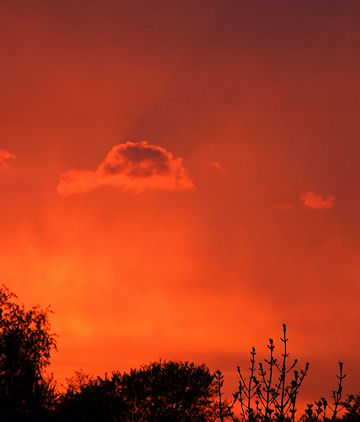NEW AND IMPROVED: Turn your iPhone or iPod Touch into a field-tested global satellite tracker. The Satellite Flybys app now works in all countries. | | | THE ASTRONOMY OF MOTHER'S DAY: Do you dare wake Mom at dawn ... on Mother's Day? Under the circumstances, she might not mind. May 9th begins and ends with a lovely display of stars and planets. Get the full story from Science@NASA. CRACKLING SUNSPOT: The magnetic fields of sunspot 1069 are in a state of considerable agitation today. Click on the image, below, to launch a 16-hour time-lapse movie from the Solar and Heliospheric Observatory (SOHO): 
Photo details: SOHO Extreme UV Telescope; May 8, 0000 - 1600 UT
The magnetic turmoil you just observed is giving rise to repeated explosions. The sunspot is literally crackling with C-class solar flares. Because of the sunspot's location near the sun's western limb, these explosions are not directed toward Earth. It's just a good show. Readers with backyard solar telescopes are encouraged to monitor the action. VOLCANIC SUNSETS: Clouds of ash from Iceland's Eyjafjallajokull volcano are blowing across Europe again, closing airports and causing fantastic sunsets. Vincent Phillips sends this picture, taken May 7th from Hale Village near Liverpool, England: 
"Volcanic ash from Iceland continues to influence our skies here in the UK, and as a massive ash cloud now gathers off the coast of Ireland, there could be many more fantastic volcanic sunsets and sunrises in the days ahead," says Phillips. Readers, you can track the progress of the volcanic plume using data from space. The OMI instrument on NASA's Aura satellite measures sulfur dioxide emissions from the volcano, which researchers turn into near-realtime maps, When a plume is passing near your location, that is the time to be especially alert for volcanic sunsets.
May 2010 Aurora Gallery
[previous Mays: 2008, 2005, 2004, 2003, 2002] [aurora alerts] | 
